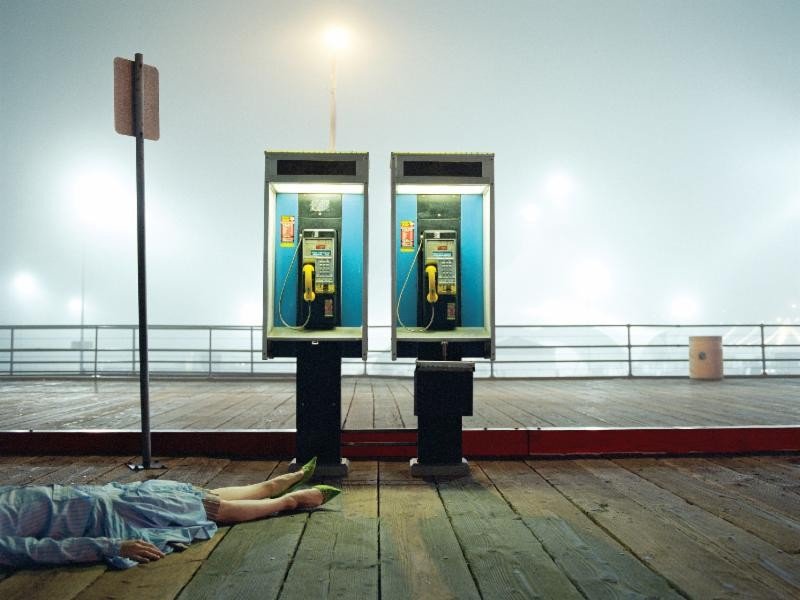
History of Violence by Melanie Pullen @ Bergamot Station
Ms. Pullen attempts, with quite a striking fastidiousness to photographic technique, to create an artistic statement on the use of violence in human society. Ignoring the wonderful technique, however, creates a cacophonous idea on what exactly is being exhibited. The very loose though asserted binding between her two completely independent artistic projects – one being famous Hollywood female murder scenes, the other male soldier figurines – fails to yield anything substantial other than a frightening presumption of the male sex as being predatorily homicidal.
It is important in art to make such separations of the aesthetic and its embedded packaging, i.e. what the beauty is actually directed towards. This exhibition is a strong instance of a collection of art lacking an intelligible direction to convey something symbolically, i.e. culturally, significant, thereby progressing the arts and henceforth enlightening man. It is an act of vanity in other words. And this is clear once we considered the inchoate connection between dramatized, even ironically glamorized, Hollywood murder crimes and the soft-spoken photographic capture of periodic men-of-war.
This would be a completely different critique had the two collections been made wholly separate. But because there is, again, an outward claim by the artist that they speak to something more, a “history of violence”, it is uncanny then how violence is myopically portrayed. It could have been patently easy to depict Hollywood murder crimes with male victims; to maintain a noir aesthetic, however, required virtually by necessity female deaths. And this consistent segregation of the sexes, one class being killers (the men of war) and the other being murder victims (the females) speaks to a quite jejune, superficial, grasp of human history. It mythologizes a stereotype in other words; propagating a misconception, even unjustly, on what a man and a woman is in society. This artwork can only be described, therefore, as misandrist; in being unable to debunk or even challenge violent archetypes. How many women, for instance, are aware that domestic violence abusers are most represented by their own sex?
The message may be something quite atrocious, but Ms. Pullen is such a masterful artist in subjugating light that we must appreciate her work for its technical mastery. What is particularly stunning about her photography is her utter dominion of artificial light. Artificial light being man-made illumination, which historically has been inferior in its output compared to the ideal light source which is the sun. Photography historically was conceived around using the light imprints from the sun as a source to create its renditions of reality, now to the point of unleashing the artist’s imagination in a pseudo-cinematic form.
But just as cinematographers must harness the commercial necessities of studio lighting, with the benefits being the ability to concentrate and artistically craft and focus an audience’s perception of the visual art, Ms. Pullen educates photographers on how to embrace the human element. Because after all, humanity is now completely ensconced in artificial illumination. To be dismissive of this light, because of its utter unruliness and therefore unpredictability in the production of a photograph, is unreasonable. To actually make it a centerpiece, the leading actor, in a photograph, which Ms. Pullen accomplishes, must be appreciated.
True, with her toy soldiers, it is a bit too thematic. We have too much of an ambiance of stage, and therefore a framework of artificial reenactment. Not to say this ambiance is a negative consequence, only that, when compared to her Hollywood murder scenes, wherein this light is so gently woven into the environment as if it were a time-tested planted tree, is simply a thing of beauty to witness.
[mastering artificial light, leaves one questioning which is better, man made or artificial and why]

